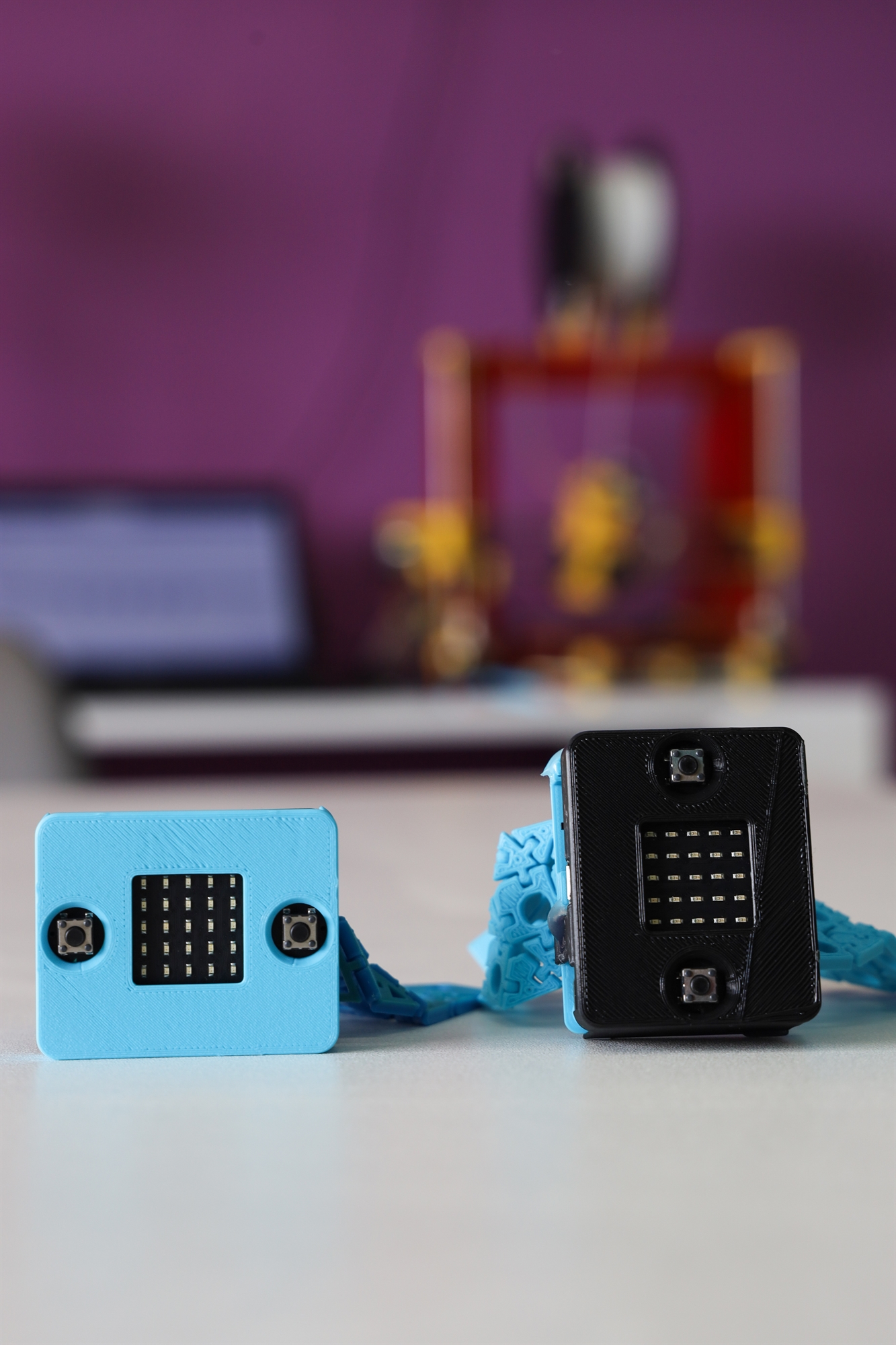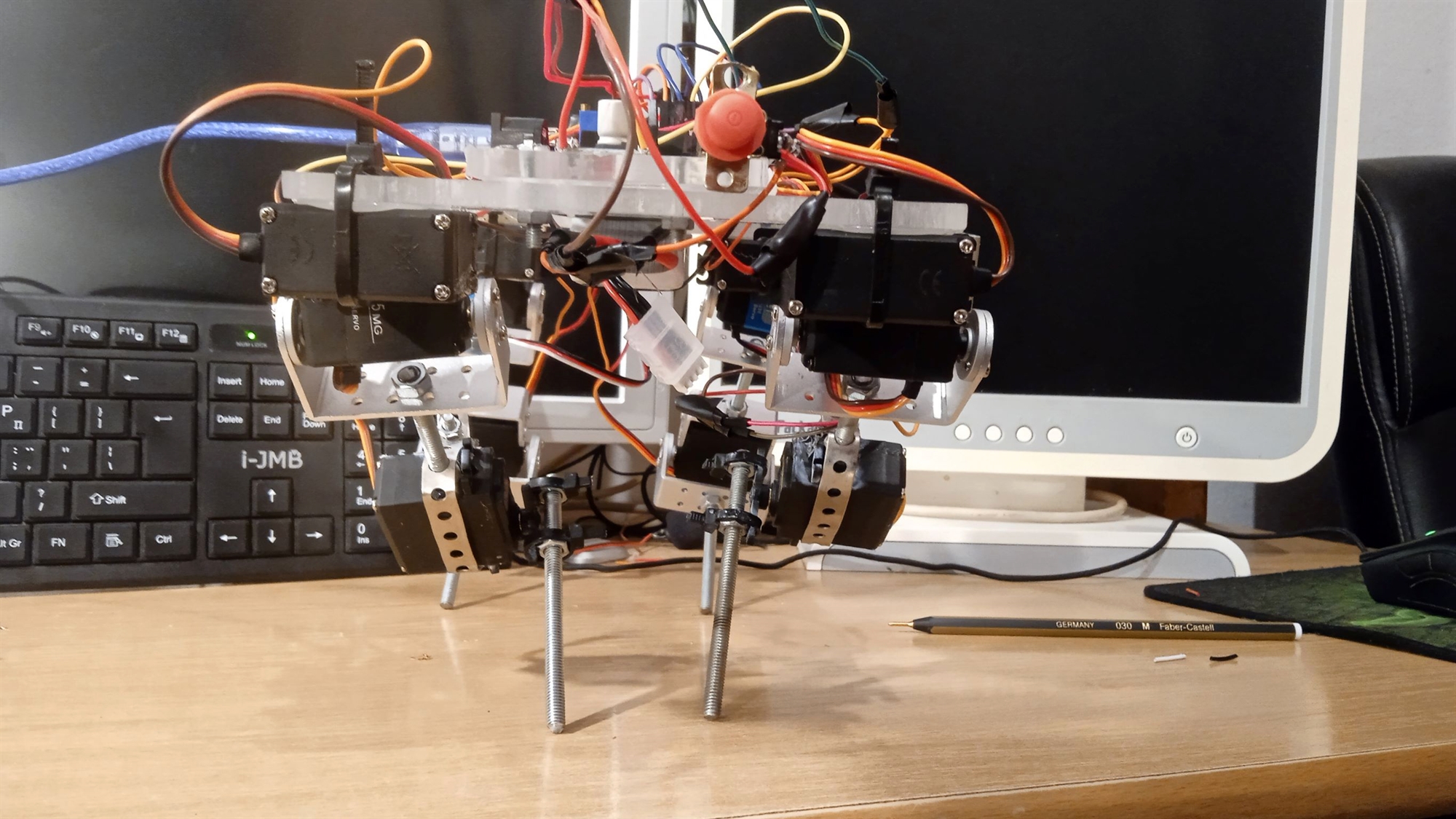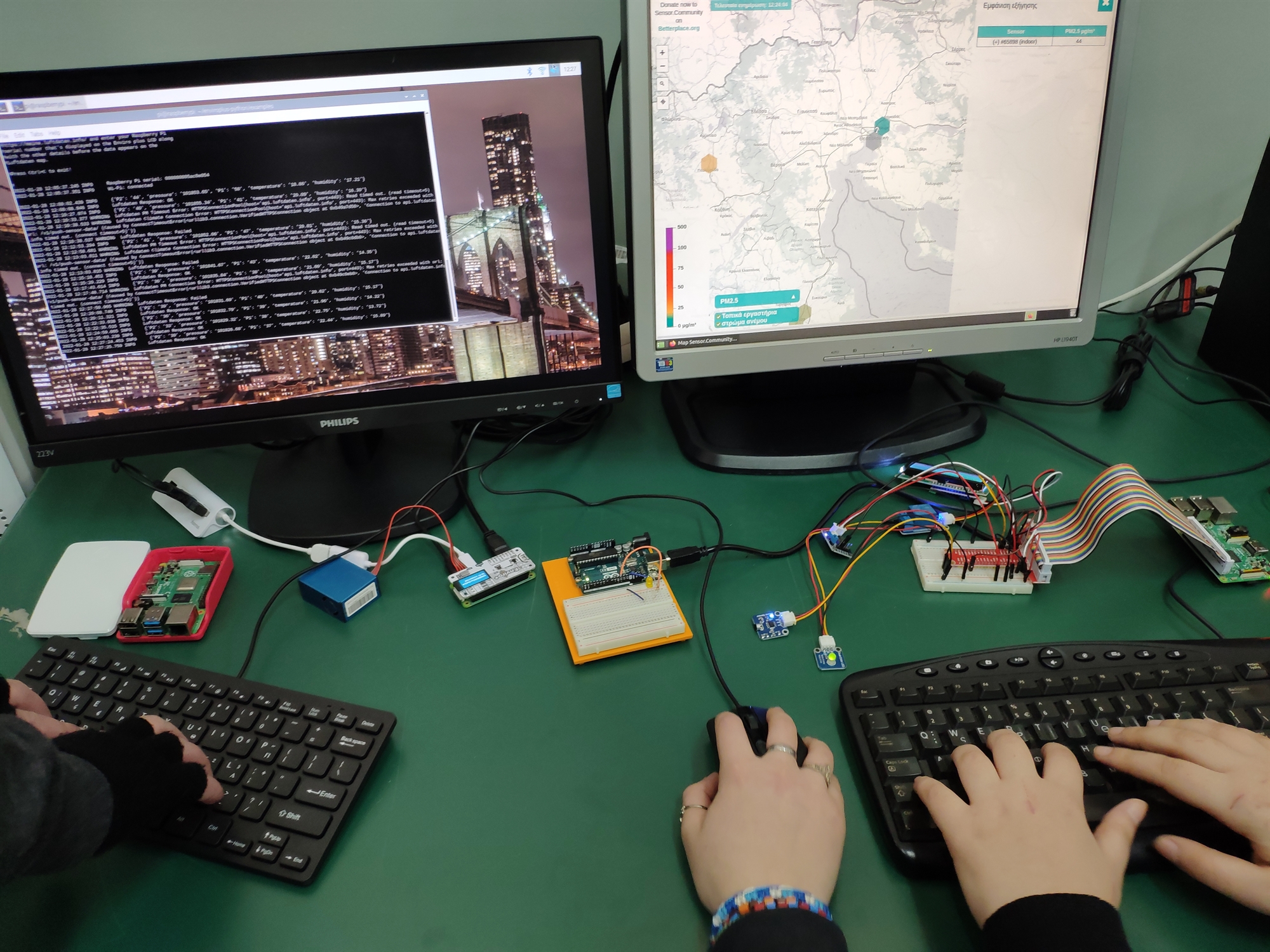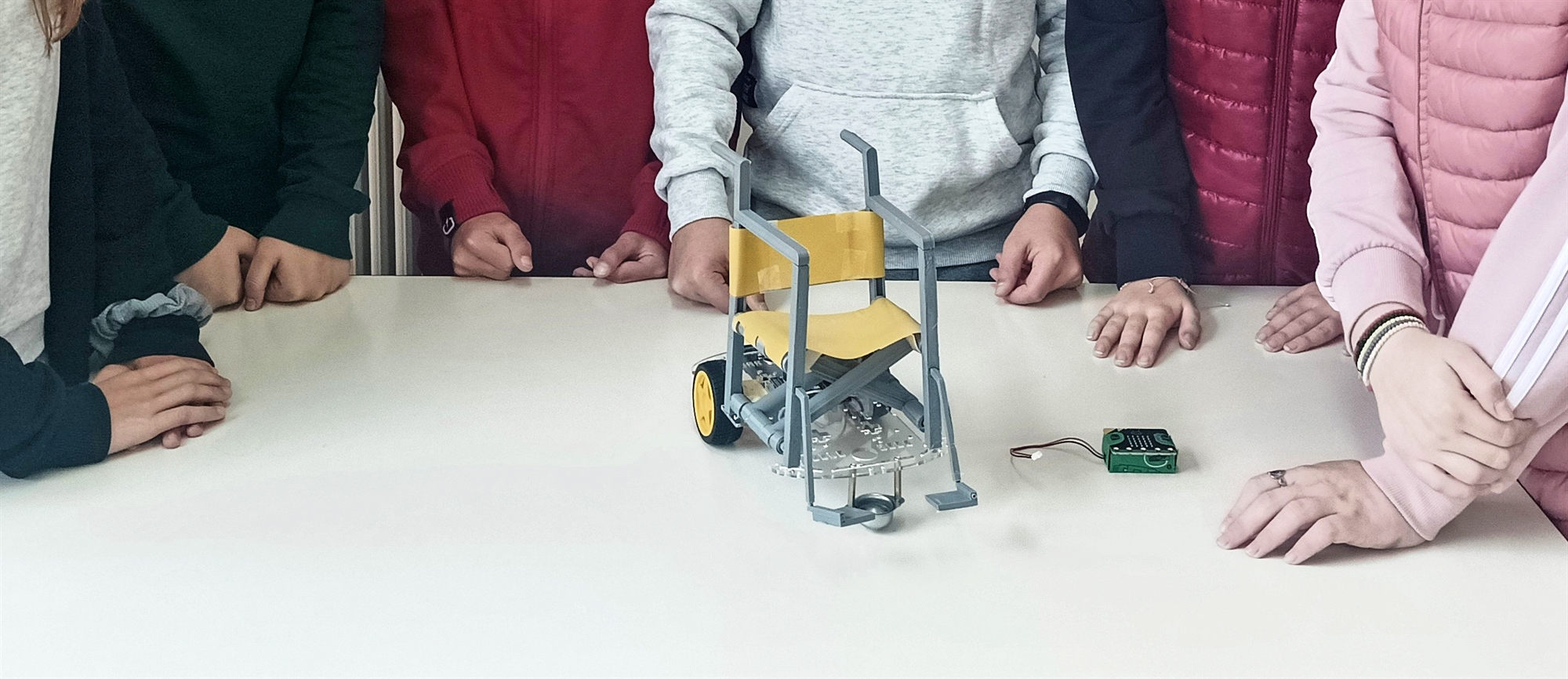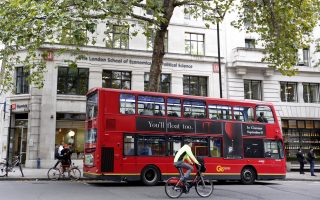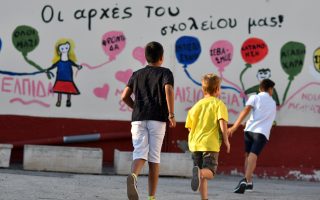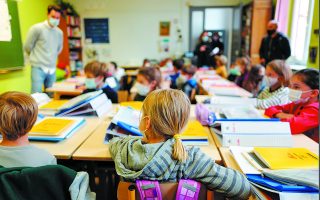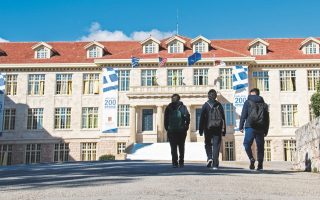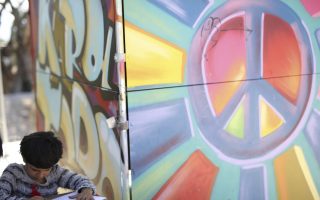Five fascinating inventions by schoolchildren
Pupils across the country tap into open-source technologies to create innovations like a robot ranger, a first-aid wristband and more
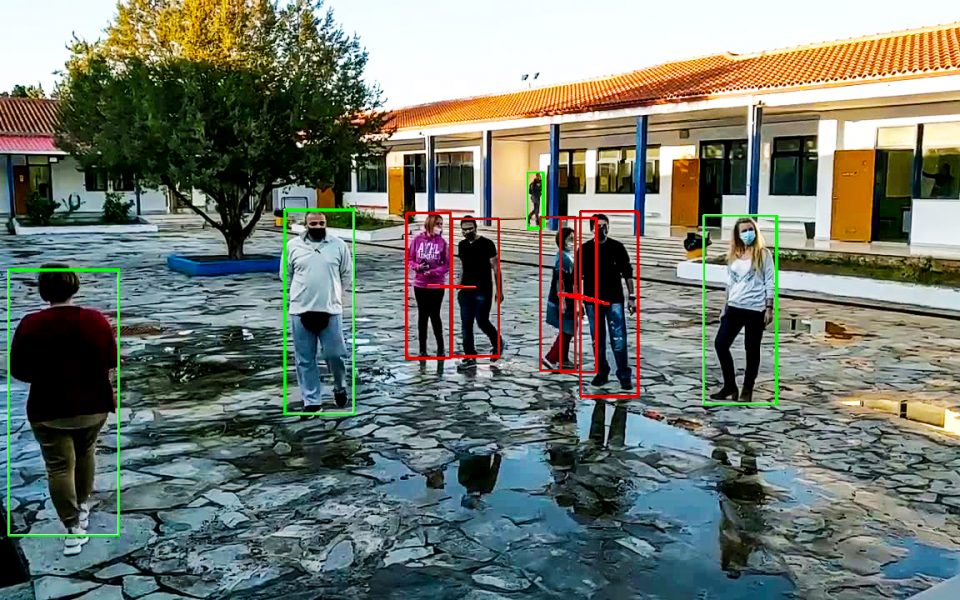
Open-source software will soon become a vital part of education, with the potential to reduce digital inequalities and unleash human ingenuity.
“Open source” refers to something that has been created and can be used freely by everyone. In the case of software, this often includes people other than the copyright holder developing the software and then making the improved version freely available, and so on. Applied at school level, this philosophy has revolutionary potential. Small technological miracles are already popping up in school labs across the country. Pupils are coming up with impressive technological solutions to everyday problems, based on information gathered from this open world of knowledge.
A competition organized by Open Technologies Alliance (EELLAK) in cooperation with universities, research centers and local and public organizations, such as the Onassis Foundation, aims to familiarize schools with “free and open-source software, open-source hardware, and free content,” says Kostas Papadimas, content and community manager of the nonprofit organization.
EELLAK provides the know-how and supplies the raw material that pupils need as they tackle practical problems, says Papadimas. “The aim is that they become more than [passive] consumers of digital services,” he says.
The idea behind the competition is that they help each other and work together with the teaching staff.
“After all, this is the objective of the competition. The different schools are not here to compete for the stronger robot but to reuse knowledge coming from other schools,” he says.
Below are the profiles of the five teams that stood out in the third open-source technology competition, which involved more than 1,000 pupils and 160 staff from across the country.
Robot-Hood – Kalamaria
The idea was a robot dog that protects the forest by alerting its authorized user to any important changes in its area of operation.
It was thought up by Thodoris Tsaousis, then a high-schooler in Kalamaria, Thessaloniki, who “put extraordinary talent and effort into designing and carrying out a very complicated project,” says Giorgos Nikolakakis, an IT teacher who acted as his guide and mentor. “Such projects are usually the work of universities and research centers,” he says.
Everything from the original idea to product construction was overseen by Thodoris, who is now a student at the National Technical University of Athens (NTUA). He built everything from scratch while EELLAK provided the parts.
Thodoris did all the designs, the measurements, the fabrication and the assembly before he installed the electronic equipment. The robot is has sensors that measure humidity, atmospheric pressure, temperature and altitude that also use artificial intelligence to detect signs of fire, such as smoke and flames, and even climate change. It also has a camera that captures images of the environment and identifies objects and changes in the landscape, such as trash and other flammable material. Furthermore, it has an arm that helps it get back on its feet if it falls over and a solar panel to recharge its batteries, Nikolakakis explains.
The pandemic made it difficult for them to meet in person but it also meant that Thodoris had more time to work. In February 2020, they launched their first version. Later editions made the robot lighter, more durable and more functional. The device received a distinction in the third edition of the competition in 2021.
Tsaousis is currently making further improvements to Robot-Hood.
“I have upgraded the entire skeleton and added four additional servomotors so it can now move left and right – until now, it could only move forward and backward and make a turn,” he says.
Tsaousis is also making improvements to the solar panel for battery charging. “It is totally energy independent,” he says, ahead of presenting the new model.
Little Hackers – Florina
As their website suggests, the Little Hackers group – the robotics group of the Florina Experimental Primary School – has been busy.
One of their projects is the e-Fai First Aid Instruction System. It consists of a wristband with a built-in microcomputer paired with a smartphone app that can provide first-aid advice, explains their supervisor, Giannis Arvanitakis.
‘The different schools are not here to compete for the stronger robot but to reuse knowledge coming from other schools’
“The kids designed the armband on a computer, made that parts using a 3D printer, assembled it and programmed it, before finally installing the app on the cellphone,” he says.
The idea was born after Kids Save Lives, an organization that educates school children in cardiopulmonary resuscitation (CPR), visited the school last year.
“We thought about creating a user-friendly system that does not require complex moves,” Arvanitakis says.
If you happen to fall or feel unwell, you can press the help button on the wristband, sending a signal to all wristbands within a distance of 70 meters. It will make a loud buzzing sound and its screen will start blinking to alert people in the immediate vicinity. The smartphone app will additionally send a text message to a designated emergency service, while voice commands and videos will give step-by-step instructions for providing CPR.
The kids are already updating the system so as to improve its range and include a virtual reality application. “With the help of a headset, a person will be able to see the whole process of providing first aid through a virtual world,” Arvanitakis says.
Once they have finalized the device, the team plans to donate it to Kids Save Lives.
Smart wheelchair – Agrinio
The idea for a smart and eco-friendly wheelchair is the brainchild of the Educational Robotics and STEAM team at the Neapoli Middle School in Agrinio, Central Greece.
“We thought that if a person has been left unable to move any part of their body except for their finger or head – due to an accident or illness – this slight motion could activate a wheelchair with the help of two microcomputers,” says the project’s supervisor and team teacher Evangelos Arapogiannis.
“One microcomputer plays the role of remote control and transmitter and can be adapted to any functional part of the user, and is connected to the second microcomputer, the receiver, which is attached to the motor driving the wheelchair. When the user leans his or her head in any direction, for example, the transmitter sends a signal to the receiver to activate motion. We used a 3D printer to print the components of a wheelchair at a ratio of 1:10 and put it together. We fitted the two motors, the engine control unit, the microcomputers and the rest of the equipment and programmed it,” he adds.
A sensor to control distance and evade obstacles will be added down the line, along with a solar panel to recharge the battery and a gear box regulating the wheelchair’s speed.
Different Air – Thessaloniki
The air in school classrooms tends to get stale, but open-source technologies have helped the Experimental Elementary School of Thessaloniki University in northern Greece change this. Under the supervision of their computer and IT teachers Filippos Koutsakas and Emmanouil Kosmidis, a group of pupils created a very effective smart system to improve air quality.
The “Different Air” system includes sensors that measure the concentration of airborne particles, temperature, humidity and barometric pressure, a dehumidifier, a control panel and a microcomputer that makes sure all these parts communicate with one another.
“The pandemic and need for well-ventilated classrooms acted like a springboard for the project, after the scientific community informed us that Covid-19 is transmitted by aerosol particles. Good, natural ventilation is very important for the children’s health and also their performance in class,” notes Koutsakas.
“The solution we came up with basically constituted two parts. The first comprises the microcomputer through which the sensors measuring air quality communicate, and the second is the dehumidifiers, which are set on automatic mode and help refresh the air. The different scenarios we ran for airing the room showed that the system improved air quality quite significantly. The objective of Different Air, which the children in the club worked on with great enthusiasm, is for it to be used by every school in the country,” he adds.
Smart school – Aliartos
The students at the Vocational Night School of Aliartos in Viotia don’t have to wait for the computer to start up or to leaf through their textbooks to get to the right page when class starts.
“The projector switches on automatically, showing all of the material on the screen. This includes photos, extracts of text, web pages, textbook pages and the exercises the students did as homework. And all this material is easy to manage using a simple remote control. With one press of a button, you have the entire lesson right there,” explains the project’s supervisor, teacher Emmanouil Kessoglou.
The smart lesson guide designed by his students is made up of two sub-systems.
“The first makes the day-to-day challenges of class a little bit easier, by reducing the amount of time it takes to get started and therefore increasing actual learning time. Educators and students upload the day’s material on the school’s main server – which is programmed with the daily schedule – and that is then shared to the terminals in each classroom at the right time. The second sub-system helps to curb coronavirus transmission. It consists of cameras placed in the school’s courtyard and entrance that – with the help of artificial intelligence and without storing personal data, only statistics – detect whether students are keeping a safe distance from one another. It draws a green perimeter around people who are at safe distance and a red one for those who are not,” says Kessoglou.
“The project has had a very good impact on the students’ spirit of cooperation, on their mood and on their performance. These students are of all ages. We have 40- and 50-year-olds who decided to sit university entrance exams because they became so interested in how science can help people on a day-to-day basis. The Open Technologies Alliance competition is all about cooperation, about students helping each other. Everything that is created, using cheap technologies and building on the accomplishments of others who came before them, is then freely available to those who come after.”
